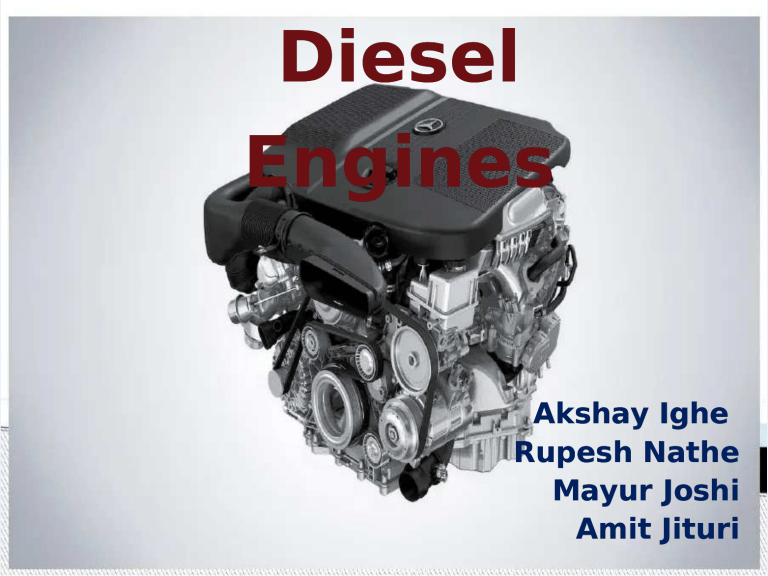
Diesel Engines Akshay Ighe Rupesh Nathe Mayur Joshi Amit Jituri ENGINE Engine is a power plant of an automobile which produces power and through transmission and end drive system and it runs the wheels which in turns moves the vehicle in desired direction at specic speed. In this presentation we will discuss about I.C. Diesel Engine. Classication !" I#C# Engine Working Principle Spark Ignition Compression Ignition Working Cycle Otto Cycle Diesel Cycle Fuel • • • • • • • • asoline C! "# Diesel N!# !" $trokes $wo $ wo Stroke Stroke • • %our Stroke %ive Stroke Si& Stroke Stroke Construction • • • • • • • • • In "ine Engine '( Engine E ngine )(Engine *(Engine +adial Engine +otary Engine ,o&er ,o& er Engine Metho% !" Fuel $uppl $upply y &o &o Engine Engin e Carbureted Engine • • %uel In-ected Metho% !" 'u(rication ist "ubrication *et Sump "ubrication • • • Dry Sump "ubrication Metho% !" Cooling /ir Cooled Engine "i0uid Cooled Engine • • No# !" Cylin%ers Single Cylinders ulti Cylinders • • $#I# Engine1(It runs on Otto cycle and fuel is ignited by spark. • $ypes $ ypes Of % %uel uel asoline 2C34536 C! "# C#I# Engine1( It runs on Diesel cycle and %uel is ignited by 4igh pressure Compression. • $ypes $ ypes Of % %uel uel Diesel 2C574786 Properties !" Diesel $he chemical components components or composition composition of diesel fuel fuel include 9: percent of saturated hydrocarbons and 7:; aromatic hydrocarbons. *hen broken down< it consists of para=n that includes iso and cyclopara=ns as well as naphthalene and alkyl ben>enes. )istory !" Diesel Engine $he diesel engine was developed by erman inventor +udolf Diesel in 53@8. Since the 5@5As they have been used in submarines and ships. In the 5@8As< they slowly began to be used in few automobiles. Since theon(road 5@9As< and the use of diesel engines in larger oB(road vehicles increased. Engine &erminology &op Dea% Center 2&DC*+ $he topmost position of the piston in the engine cylinder. ,ottom Dea% Center -,DC*+ $he bottommost position of the the piston in the engine cylinder cylinder.. Cylin%er ,ore -D*+ $he cylindrical barrel shaped passage in which the piston reciprocates. $troke -s*+ $he distance distance travelled by the piston from $DC to ,DC. Clearance .olume-/c*+ $he volume remaining between piston and cylinder when the piston is at top dead centre. $0ept .olume-/s*+ $he volume of a cylinder swept by the piston while moving from one dead centre to another. &otal .olume -/t*+ Swept volume Clearance Cleara nce volume $ $otal otal volume. -/s 1 /c2/t*# Cu(ic Capacity -CC*+ Cubic capacity is the total volume of the engine cylinders taken by piston movement 2piston stroke6. stroke6. Diesel Cycle P3/ Diagram+3 • • • • /(,1 Compression. /(,1 ,(C1 Ignition. C(D1 E&pansion. D(/1 E&haust. • • • • &3$ Diagram+ /(,1 /diabatic compression. ,(C1 Isobaric ignition. C(D1 /diabatic e&pansion. D(/1 Isobaric e&haust. Cranksha"t+3 $he crankshaft< sometimes called as crank< is the part of an engine that translates reciprocating recipr ocating linear piston motion into rotation. Camsha"t+3 It is a rotating shaf shaftt with one or more cams fastened to it. It is used to operate valves of internal combustion engines. Connecting ro%+3 In a reciprocating recipr ocating piston engine< the connecting rod connects the piston to the crank or crankshaft. $ogether with the crank< they form a simple mechanism that converts reciprocating reciprocating motion into rotating motion. Piston+3It is a reciprocating component of engine used to transfer force from e&panding gas via in the cylinder torod. the crankshaft a connecting co nnecting • • /al.es+3 Intake valve1($he intake valve opens to allow the airto into the combustion chamber thenfresh closes seal the chamber during compression and power stroke. Exhaust valve1($he intake valve opens to allow the burnt gases to emit out of the combustion chamber then closes to seal the chamber during compression and power stroke. /al. e /al.e $tem $pri ng Intak e Port E4ha ust Port /al. e /al.e $eat Fuel in5ector+3 %uel in-ector is a main component of diesel engine. It in-ects high pressure fuel into the combustion chamber in atomi>ed form. Working Principle o" Compression Ignition Denition + &he concept (ehin% compression ignition in.ol.es using the latent heat (uilt up (y highly compressing • air insi%e com(ustion means "oraigniting "uel# cham(er as the Charge of air gets compressed inside enclosed chamber. 2compression ratio 75156 • • • eneration of tremendous heat and pressure inside chamber. #recise 0uantity of diesel fuel is sprayed under high pressure 2atomisation6 into compressed air inside chamber. /ir fuel mi&ture gets ignited and burst into a controlled e&plosion and pushes the piston Construction Working Intake Strok Stroke1( e1( $he intak intake e valve opens up< letting in air and moving the piston down. Compression Stroke1( $he piston moves back up and compresses the air air.. #ower Or Combustion Stroke 1( /s the piston reaches the top< fuel is in-ected at -ust the right moment and ignited< forcing the piston back down. E&haust1( $he piston moves back to the top< pushing out the e&haust created from the combustion out of the e&haust valve. a .e m ng3 Diesel ro e Compression Ratio Compression +atio is a ratio of a cylinders volume when the piston is at ,DC to the cylinders volume when the piston is at $DC. Comp. +atio is ratio of volume of air sucked into the cylinder to the volume it is compressed $he compression ratio of diesel engine is between 5315 to 7715. &ypes !" In5ec In5ection tion $ystem • In%irect In5ection $ystem-Pre3cham(er* • • Direct In5ection $ystem-DI* Common Rail Direct In5ection $ystem-CRDI* In%irect In5ection $ystem Direct In5ection $ystem Fuel In5ection In5ection Pump Common Rail Direct In5ection $ystem ODE+! DIESE" E!I!E &)A&$ A'' F!'7$
![MTU SERIES 60 MARINE[1]](http://s2.studylib.es/store/data/009437511_1-a3e64a9d50ce320d33d006c4e06868c4-300x300.png)
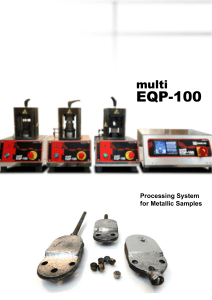
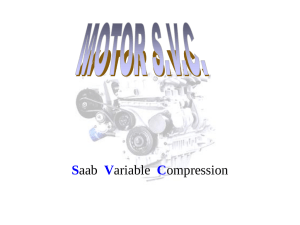
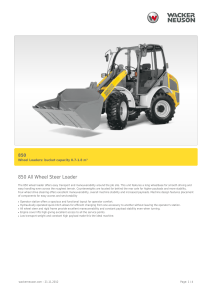

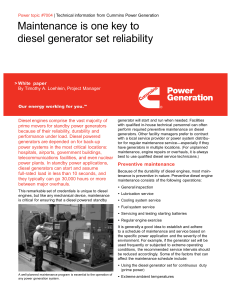
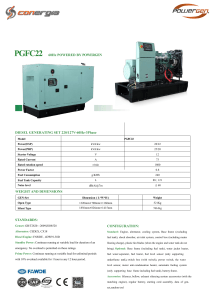



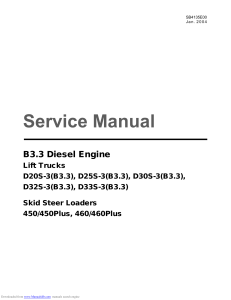
![JHON DEERE 4024 - copia[001-210]](http://s2.studylib.es/store/data/009286352_1-dcf190483bc98b08d14be71fd2a75bcb-300x300.png)